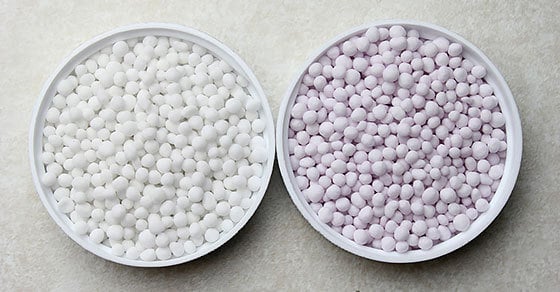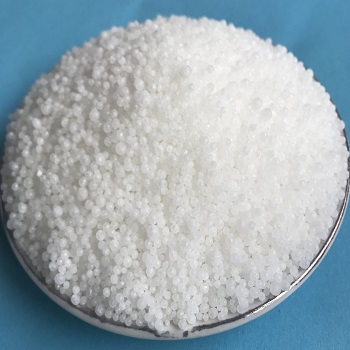Introduction
From nitrogen, urea 46-0-0 Fertilizer is a kind of highly concentrated artificial fertilizer with nitrogen, which is widely used in agriculture for its high content of nitrogen. It has 46% nitrogen in chemical components. It is a quick-release fertilizer, in that nitrogen is released immediately after application of urea fertilizer, which would provide necessary nourishment for vegetables plants. Urea is a strong growth stimulant for rapid growth plants, which requires a large amount of nitrogen in a shorter term.
A fertilizer is unlikely to reach more farms, or be more important to modern agriculture, than urea 46-0-0. It is used to produce every major grain and pulse crop as well as fruit and vegetables like apples and broccoli. Regardless of where the argument has been, universal global food production demand is growing due to the increase in the world’s population and the need to feed them. Urea 46-0-0 helps grow more food, more cheaply. ‘There’s no doubt that urea 46-0-0 is part of the modern agricultural toolbox,’ says Simon Keller, director of crop science for the independent agricultural research group Croplife Asia-Pacific.
The high yield farming using the mentioned urea 46-0-0 fertilizer is not only a mainstay of supporting plant nutrition for several crops but also a huge economic activity in the agricultural sector.When analyzing the urea 46-0-0 fertilizer price today, it is important to understand the influence of market behavior and its effect on demand and supply. This information would help farmers, distributors of the product to make the correct business decisions that would keep a good balance with the market and the agricultural sector. The information would also be important for the government in making wide ranging policy decisions on the agricultural sector.
Current Trends in Urea 46-0-0 Fertilizer Price
Elements that affect what we pay for urea are more complex. Energy prices have risen, increasing production costs for urea and therefore reflecting into the market price. Geopolitical tensions in urea-exporting nations can also reduce production potential, causing a ripple effect throughout the world. ‘Urea prices can fluctuate due to the energy price and in some part due to geopolitics,’ said Linda Fields, an economist. ‘It underscores how many agricultural inputs are sensitive to outside economic phenomena.
But when compared with historical prices, current curves are not unprecedented – they are simply higher than averages from a decade ago. Prices generally rise with the planting season when, according to historical data, demand has gone up and supply-chain kinks multiply in a complex global business. Add to this flurry of activity in the global trade environment in recent years, which involves increased uncertainty for producers and logistics planners trying to factor in environmental and non-tariff barriers.
With this understanding of dynamics and drivers shaping urea 46-0-0 fertilizer market value, consumers and suppliers can not only mitigate the risks of market fluctuations but also devise strategies to get the best possible prices for procuring for and applying this important agri fertilizer.

Impact of Global Markets on Urea Prices
Global markets exert substantial influence on the price of the commodity fertilizer 46-0-0 urea, because it, like other fertilizers, is traded on the international market. Any significant change in international demand and supply inevitably affects the price. For example, a high demand from huge agricultural players in the United States, Brazil and India pushes up the price during the main cropping period. By contrast, a greater supply of urea, notably from countries with a lot of natural gas reserves such as Russia and the Middle East, means that the market is flooded for a while, and the price drops.
The geopolitical tensions between nations and trade policies also have a major impact on the shape of the urea market. Trade disagreements between nations and populations, which are the biggest consumers and producers of urea, can find themselves penalised for exports through the applying of tariffs and bans, which in turn can cause the urea price range to fluctuate. For example, export restrictions placed in China – which is one of the world’s largest urea producers – translate into shortages of supply for the rest of the world, which cause urea prices to increase in price. Instability in geopolitical regions where urea is produced also impacts production and logistics of export, increasing the volatility of the price.
And, complicated by global exchange rates and how those impact fertilizer prices, there are international dynamics at play in the urea market. Since urea is a U.S.-dollar-based commodity, changes in exchange rates can make it more or less expensive for urea importing countries, depending on the relative strength of that country’s currency compared to the dollar. Henry Grant, a financial specialist at CF Industries, the largest U.S.-based fertilizer producer, says: ‘Currency changes can have a substantial impact on the landed cost of urea and can impact producer profitability and farmer affordability.
Knowing these global dynamics will help agricultural stakeholders to stay ahead of price fluctuations of urea. It will allow them to prepare for unexpected increases in urea. It would help our business strategists to proactively stay out of trouble by developing good procurement and use practices. Staying abreast of shifts in international markets, geopolitical climates and currency movement will be the key to success in the urea market.
Future Predictions for Urea 46-0-0 Fertilizer Price
Looking Forward, Prices for urea 46-0-0 fertilizer can be forecasted over the next several decades, depending on the application of market demand technology and environmental policies. Some of the experts are optimistic, others are more cautious when it comes to pricing for the future of fertilizer, crops and global demand, while recognising the uncertainty of the daily environment for agriculture and commodity markets.
Experts predict strong demand for urea, especially as the world’s food needs grow in response to global population pressures. Enhanced technology used in fertilizer production and product application might make production processes more efficient and lessen waste, stabilising prices. Michael Thompson, an agricultural commodities market analyst, predicts: ‘Although there will be a continued short-term tendency for markets to be unstable as agricultural needs mount, over the longer term agricultural commodity prices could become more normal and predictable as technology improves.’
Disruptors to the market wait over the horizon too. Drastic new innovations in bio-fertilizers (and, in fact, alternative nitrogen sources) are also starting to emerge, both of which would erode urea fertilizer demand. Meanwhile, new, more stringent environmental laws about nitrogen emissions would almost certainly increase production costs for urea and, more likely than not, prices of urea will follow suit on the back of these factors.
These complexities are reflected in expectations for price trends in the coming seasons. Although volatility in the short run is possible due to swings in geopolitics and the economy, the long run trends continue to be firmly on the side of increasing prices, courtesy of the combination of healthy demand and potential regulatory changes.
What does this mean for those working in the ag or agri-business sector? Tracking these trends and their disrupters will become increasingly important as they affect the cost of inputs. Understanding what drives urea prices affects how farmers and agribusinesses approach their planning. If they know the factors behind urea prices, they can better ensure that they will have ample supply to continue working sustainably and profitably.

Strategies for Farmers and Agribusinesses
To manage the fluctuating prices of urea 46-0-0 fertilizer, and compete effectively in a challenging business environment, both the farmers and agribusinesses must combat the uncertainty and strive for sustainability by employing the following strategies.
Firstly, as shown on the chart, the prices fluctuates annually. Management can employ a hedge strategy to secure rock-bottom prices by signing a contract with the supplier, which entails paying in advance. While this ensures a stable fertilizer price, it may deplete the farm’s cash reserves.
Secondly, having a tight cost control programme is crucial as it helps to stave off the effects of higher prices. This programme should involve investing in energy-saving technology, sourcing for alternative inputs with better ratio, buying fertilizer from the storage tank and engaging in price comparison across different locations.
Thirdly, the government’s support is crucial in subsidizing fertilizer to mitigate the impact of price volatility. This support availed to women farmers could attract more females to the sector and enhance productivity.
When it comes to fertilizer costs that make the ‘nutrients matrix’ more elastic, a few strategies can help in budgeting for unpredictable input prices. A forward pricing approach can be helpful, for example: when markets are low, a farmer could lock in a purchase price with a supplier through what are typically called futures contracts or forward agreements, to avoid the spikes that always come with high prices. By broadening suppliers to include geographically distant ones, a farmer can leverage more price competitiveness and diminish the reliance on a single supplier.
Strategies for cost savings include buying in bulk for storage and use during off-season, when prices are lower; or marketing together with other farmers through co ops to increase purchasing power, which reduces prices due to higher volumetrics, and by lowering transport and storage costs. Second, the use of nutrient sources or a blend of fertilizer that delivers the same agronomic benefits for less cost can hold the line on fertilizer spending, which can consume the lion’s share of semi-intensive/intensive production costs.
It is also important to be able to use forecasts in planning and operations. If fertilizer prices are in a downward trend, farmers can schedule slow-release fertilizer applications closer to the growing season, taking advantage of prices that are likely to be lower later on. Decision-support tools and agricultural extension services that routinely provide farmers with market intelligence and advice on how to respond can improve this approach.
Such measures require careful balancing of both cost and elegance with forward market planning, competitive market readiness and operational flexibility. Once again, careful pre-planning and decision making will assist farmers and agribusiness help maintain or enhance market share during the significant fluctuations of urea 46-0-0 fertilizer prices.
Conclusion
In conclusion, one needs to study urea 46-0-0 fertilizer price pattern very carefully before starting an investment of urea fertilizer business. It needs a lot of study in deep on local market atmosphere, as well as the international economy and agricultural issue. Meanwhile, the price of urea fertilizer being affected by many factors out of the agriculture economy circle, these factors include the geo-politic situation, as well as the technology development and so on, and the agricutures are needed to be careful to follow with the economy trend.
Through purchasing strategies, intertemporal financial planning, and monitoring of market conditions and forecasting, farmers and agribusinesses can minimise the impact of price volatility. Looking ahead, anticipating potential changes and altering procurement and use plans accordingly will be crucial in maintaining agricultural productivity and profitability. Advanced farming techniques and alternative fertilisation strategies will also continue to be important in shaping a resilient agricultural future. Through these strategies, agriculture can continue to provide food in a sustainable manner, meeting global food supply requirements.
Here’s a list of references that provide valuable information on the urea 46-0-0 fertilizer price:
- International Fertilizer Association – Offers comprehensive data and analysis on fertilizer prices, including urea, which is critical for understanding market trends and pricing strategies.
- The Fertilizer Institute – Provides updates and insights into fertilizer market dynamics, including pricing and supply issues affecting urea.
- USDA Economic Research Service – Features reports and data on agricultural commodities, including fertilizer prices and their impact on farming economics.
- Argus Media – Publishes detailed reports and forecasts on global fertilizer markets, including specific analysis on urea prices.
- CRU – Fertilizer Week – Delivers weekly updates and in-depth analysis on the global fertilizer market, including urea, with detailed price indexes.
- Green Markets – A Bloomberg company that provides high-quality news, data, and analytics for the global fertilizer market, including real-time price tracking.







